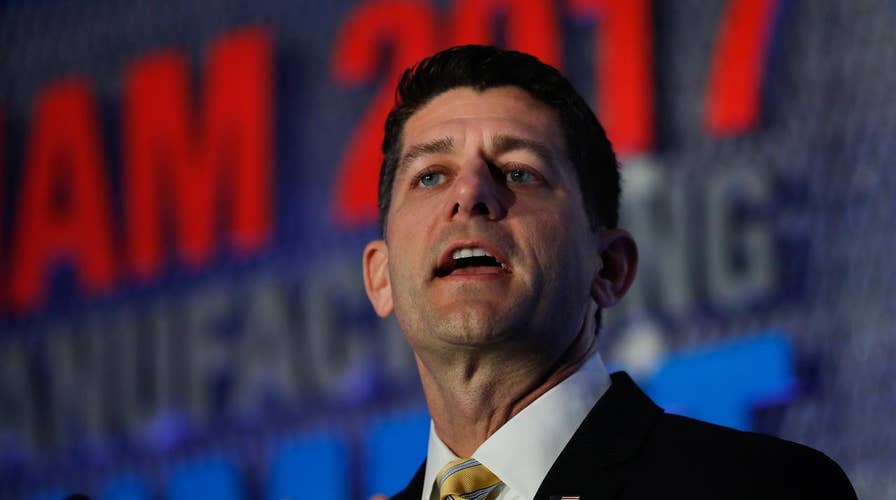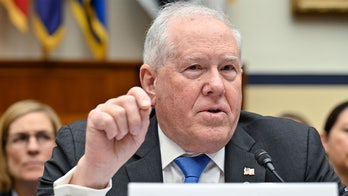Ryan: US has the worst business tax system in the industrialized world
House Speaker Paul Ryan on the U.S. corporate tax system.
You hear a lot about polls in politics. But uou don’t hear a lot about poles, and you should.
Major legislative agenda items are won and lost at the margins. It’s one thing to marshal the core of a majority in Congress to support a broad policy position like “repealing ObamaCare” or something more nebulous like “tax reform.” It’s another enterprise to usher a controversial bill to passage.
Big bills are won on the edge. Successful presidents and congressional leaders vacuum most of the “easy” votes from the middle of the playing field. But they then must play to within a millimeter of the chalk line to cajole the handful of congressional skeptics to support their initiative.
Those outliers may agree in principle with an agenda item, but not the specifics. That’s where legislative engineers attempt to tweak a bill to lure just the right number of lawmakers to vote yes and pass the bill.
And this is what brings us to the issue of “poles” in politics. Political poles.
You heard about this a lot when House Republicans struggled in the spring to approve their health care bill. First they had some moderate Republicans on board.
Then that support slipped when House Speaker Paul Ryan, R-Wis., courted the conservative House Freedom Caucus. Then some more changes. With that, the GOP brass managed to move a few moderates like Reps. Tom MacArthur, R-N.J., Martha McSally, R-Arizona, and Elise Stefanik, R-N.Y., into the yes column.
MacArthur’s own amendment helped. But they lost other moderate GOPers like Rep. Charlie Dent, R-Pa. So, the leadership and President Trump had to go to the poles. Everything else was filled up. Either they were going to convince some very conservative Republicans or some very moderate Republicans to vote yes or they weren’t.
In the end, Ryan and others charmed just enough Republicans from both poles, to vote yea. The House approved the package 217 to 213.
It’s not so much that political leaders can threaten recalcitrant lawmakers into submission. They have to read the political atmosphere to concoct a legislative solution modeled to the circumstances.
In the case of the health care bill, many House Republicans ultimately wanted to make good on their longtime campaign promise to repeal and replace ObamaCare. The bill wasn’t perfect. It was just good enough.
Perhaps the most persuasive argument was one the Republican brain trust never had to make. Rank-and-file Republicans knew they had opportunity to upend ObamaCare now, considering the fact that Trump, a Republican, is in the White House and the GOP holds majorities in the House and Senate.
The polar issue is augmented in the Senate compared to the House.
Moderates like GOP Sens. Susan Collins, Maine, and Lisa Murkowski, Alaska, will demand very different things compared to fellow Republican Sens. Ted Cruz, Texas, and Mike Lee, Utah.
House Republicans possessed a wider turning radius to address these problems. But the Senate breakdown doesn’t do Republicans many favors.
The GOP possesses Senate 52 seats. Forty-eight senators caucus with the Democrats. Republicans are angling for just 50 yeas with the hopes that Vice President Pence would break the tie.
Talk about playing to the edge of the field.
There are arguments that the bully pulpit doesn’t exist when it comes to the presidency.
That could be true -- except when the president or congressional leaders need to flip just a vote or two. However, the bigger problem remains at the poles. Fix one issue to placate the moderates and you’ve broken something with the conservatives. Or vice versa.
Regardless of the outcome on health care, Republicans realize they are already dealing with poles on the next big issue facing Congress: tax reform.
There are two primary GOP credos: lower taxes and lower deficits. That’s why it’s extraordinary to hear some Republicans whisper privately about raising taxes on wealthy earners as a part of tax reform. By the same token, other GOPers suggest a willingness to drive up the deficit to score lower tax rates.
Naturally, achieving lower tax rates without increasing the deficit involves threading a needle -- and it would be done at the poles of the Republican party.
Tax reform is challenging enough. But tax reform can be very personal. Certainly all sorts of organizations and industries will push for Congress to retain particular tax shelters. That will involve dealing with a handful of lawmakers at the margins.
Ryan endorses ideas like a border adjustment tax, which helps U.S. exports and could impact imports. Navigating the vagaries of tax reform certainly requires buy-in at the edges.
In the best of scenarios, it will be a struggle for the GOP to draft a tax reform plan that manages to lower taxes without spiking the deficit. It’s unclear how the math would work.
In other words, the Treasury Department could see less revenue if taxes are lower. That said, House Ways and Means Committee Chairman Kevin Brady, R-Texas, has been relentless in preaching a “pro-growth” mantra.
He argues that lower taxes would bolster economic growth. A more muscular economic engine would flood the Treasury with revenue, driving down the deficit.
It will be interesting to see how the Congressional Budget Office evaluates various iterations of the GOP’s legislative blueprints. Recall how many Republicans upbraided the CBO for its appraisals of the House and Senate GOP health care bills.
Congressional Republicans opened a can of worms in taking on the nonpartisan office. Will some Republicans use CBO forecasts of meager economic growth or skyrocketing deficits as reasons to oppose tax reform?
Not all. But some will. And those members are important to watch if they are at the margins.
Ironically, it could be a little easier for Republicans to assemble a tax-reform package if they enlisted Democrats. Granted, you’re dealing with the poles there, too. There are liberal Democrats who would be willing to vote yes on a “soak the rich” premise.
There are conservative Republicans who would vote yea because the extra revenue curbs the deficit. But the poles can be even more polarizing when you’re grappling with members of your own party. In those cases, the “Earth” is smaller. It might not be that far to the equator. But the sides are more entrenched despite being “closer” together.”
So it’s up to the poles of the Republican party when it comes to finishing the health care bill and potentially advancing tax reform. GOP leaders and President Trump just have to figure out a way to solve both puzzles without everything tipping off its axis.





